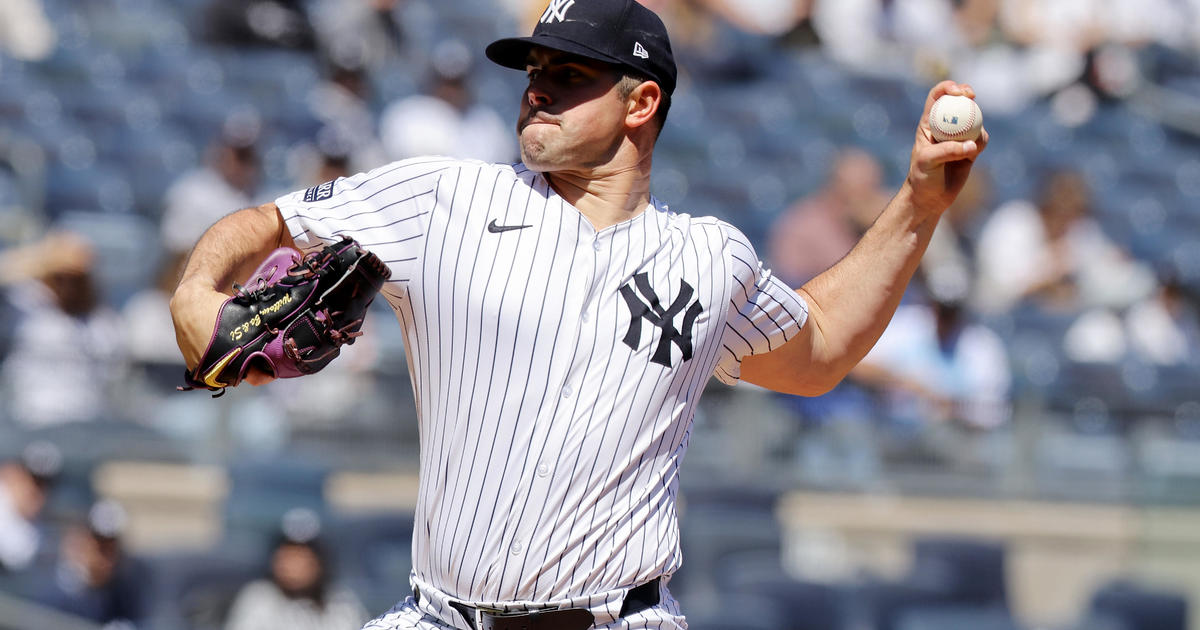Crooks: U.S. Women's National Team Really Needs To Consider A Formation Change ASAP
By Glenn Crooks
» More Columns
By virtue of their first-place finish in Group D, the U.S. Women's National Team earned an extra day off and an easier path to the Women's World Cup semifinals.
On Monday, the Americans, ranked No. 2 in the world, will play No. 28 Colombia in Edmonton, Alberta, at 8 p.m.
With five days to prepare and two opponents that should cause minimal resistance on the path to the semifinals, the USWNT has adequate time and a strong need to change the structure of its system.
It is time to amend the shape from a 4-4-2 to a 4-3-3.
If you deem this a radical adjustment midway through this select quadrennial event, I would ask you to please reconsider. The current team was in a 4-3-3 shape during the early portion of residency with head coach Jill Ellis and each of the 23 players on board have competed at the highest levels in this system. The modifications would not be complex for this faction. With five days of film and diagramming along with on-field functional training in the altered shape, the leading players in American soccer can solve the nuances.
The U.S. should dispatch opponents Colombia and then China or Cameroon in ANY system. Consequently, it is the ideal occasion to enhance a shape that has stripped Lauren Holiday and Carli Lloyd of their extraordinary attacking skills.
In my proposed system, there are minimal maneuvers necessary. Christie Rampone, who becomes a 40-year-old on June 24, moves to center back alongside Becky Sauerbrunn, while the emergent Julie Johnston converts from the back to a holding midfielder or a 6.
Johnston, exceptional at the back in group play as a replacement for the injured Rampone, offers all the necessary qualities of the position. On the defensive side she's a ball-winner and strong in the air. In the attack, she is technically proficient and can provide proper limited touch service while still featuring an ability to drive the ball into dangerous attacking areas. The Santa Clara alum and NWSL stalwart with the Chicago Red Stars would offer the pivot needed to provide rhythm and the ability to change the point of attack in a crisp, precise manner – a quality that has been sorely absent in the opening matches without a genuine 6.
"Absolutely no doubt in my mind that Julie is a phenomenal holding midfielder," said Johnston's collegiate coach, Jerry Smith. "There is no one better."
Smith, who will be entering his 29th season at Santa Clara, told me that Johnston played in the hole in about 50 percent of her matches with the Broncos. She also excelled as a center back and forward.
"I said last year at the end of the season that I think Julie is the best center back in the country," said her Red Stars coach, Rory Dames. "In my opinion, she has been the best player through the first three games. I think it would be a mistake to move her."
Dames offers a valid evaluation, but who are the other candidates to quarterback the attack? Shannon Boxx, who is 37 and appeared in the latter stages of the Nigeria match on Friday, is unfit to perform consistently over a four-match stretch through the finals. There is no other natural 6 on the roster.
With Johnston working solo as a holding mid, Holiday and Lloyd are automatically launched into more desirable attacking positions, i.e., closer to the goal. Lloyd may be the best distance finisher in women's soccer yet has failed to take a single laser from outside the area. This center midfield pair shared the 6 role in the group matches and the result was miserable. Let them both go. Let the fullbacks go. It's not the artificial turf, Abby, it's the system. With changes, the U.S. will create more opportunities, which should result in more goals.
With a triangle in the midfield, there should be massive space for dynamic incursions into the attack by fullbacks Megan Kingenberg and Ali Krieger. Should Rampone falter from a lack of fitness or effectiveness, then Whitney Engen is capable, as illustrated early in Ellis' term before she suffered an injury.
Megan Rapinoe, who provides the flair and panache, becomes a left wing. With two goals and an assist in the opening win versus Australia, she is a far more effective player on the flank – rather than trying to strike a positional balance on the left or right in Ellis' flexible four-player midfield.
Abby Wambach, assured of another start against the diminutive Colombians in the Round of 16 match, is the target. The right wing stable is plentiful with Alex Morgan, Sydney Leroux, Christen Press, Amy Rodriguez, Tobin Heath and Heather O'Reilly to choose from. Rodriguez, Press and Morgan could all be effective at center forward as well.
Lest we forget, Hope Solo provides strong leadership and confidence to the assemblage in front of her. Without debate, Solo is the top goalkeeper remaining in the World Cup and perhaps the elite female keeper across the globe. Whether it is your belief that Solo should or should not have the privilege to don the U.S. jersey (see U.S. Sen. Richard Blumenthal), she gives her side a unique advantage. Consequently, moving Johnston off the back line becomes more feasible.
Ellis and her staff, including Tony Gustavsson, who coached a Champions League finalist last season, and Steve Swanson, who coached an NCAA finalist last season, must be pondering the quality of performance over the first three matches. The players have given maximum effort but are they executing a game plan? What are the discussion points in staff meetings as they prepare for the knockout stage of WWC '15?
Swanson, the University of Virginia head coach, has instructed the 4-3-3 for a majority of his 14-year tenure at the ACC power. Is it possible that there are internal deliberations that focus on the shape of the U.S. XI? Swanson, who coached the U-20 Youth National Team to a world title in 2012, trains a possession style that places an emphasis on ball movement to create space for the many dynamic attacking players he has recruited over the years. What could he be thinking as he watches this direct style of soccer that more resembles a match from 1970's English football?
Grant Wahl, senior writer for Sports Illustrated and a regular on my Women's World Cup pre-game show at SiriusXM, told me he trusts that the 4-3-3 is a good idea, but he does not believe Ellis will consider a change at this juncture.
I contend that there IS adequate preparation time, coupled with a level of opposition that allows for a trial.
What is the bigger risk -- attempting to repair a dysfunctional system or simply hoping that the status quo will work itself out? Without a transformation I fear that Wambach, Boxx and O'Reilly, all playing in likely their final major competition, will end their international careers without experiencing the greatest high in women's soccer – hoisting the World Cup trophy.
Glenn Crooks is the color commentator for New York City FC on WFAN and the former head soccer coach at Rutgers University. You can follow him on Twitter at @GlennCrooks and glenncrooks.sportsblog.com.



